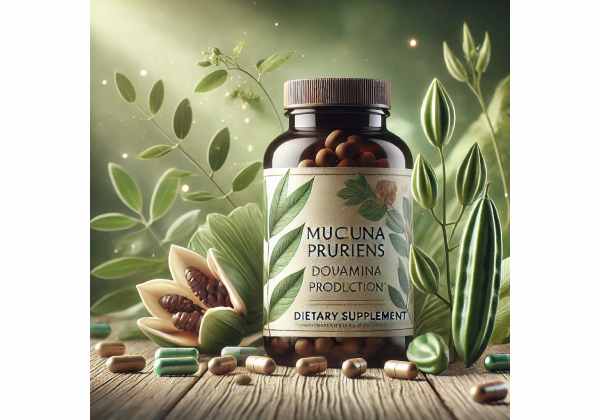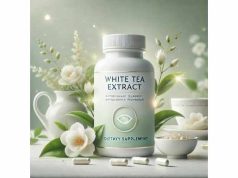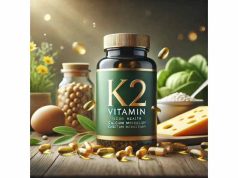
Mucuna Pruriens, a tropical legume recognized for its diverse health-boosting properties, is quickly emerging as a noteworthy supplement for individuals seeking to enhance their eye health. This climbing plant, often called “velvet bean,” has historically been embraced in traditional Ayurvedic therapies for neurological support and more. Recent discussions highlight its potential to bolster eyesight through dopamine regulation and antioxidant activity. From mitigating oxidative stress in the retina to improving nerve function crucial for sharp vision, Mucuna Pruriens could be a promising ally for those aiming to protect and nurture their eyes. Keep reading to discover why this plant-based supplement may be the next step in your vision-care routine.
Table of Contents
- Mucuna Pruriens Basics and Unique Characteristics
- Insights into How Mucuna Pruriens Can Enhance Vision
- Core Benefits for Ocular Well-Being
- Guidelines for Effective Use of Mucuna Pruriens
- Recent Studies and Academic Findings
- Frequently Asked Questions
- References and Sources
Mucuna Pruriens Basics and Unique Characteristics
Historical Roots and Global Presence
Mucuna Pruriens is a tropical legume prevalent in Africa, India, and parts of the Caribbean. Often referred to as velvet bean due to its fuzzy seedpods, the plant has been utilized for centuries in traditional Ayurvedic medicine. Practitioners initially recognized it for its beneficial impact on the nervous system, libido, and mood regulation. Over time, its use expanded across the globe, with Western science now investigating its broad array of chemical compounds.
Bioactive Compounds
At the heart of Mucuna Pruriens’ actions are naturally occurring levodopa (L-DOPA) and other phytoconstituents. L-DOPA is a precursor to dopamine—an essential neurotransmitter that influences motivation, movement, and visual processing. The bean also harbors small amounts of serotonin, tryptamine alkaloids, and various antioxidants. These compounds collectively contribute to the positive health impacts, including possible improvements in eye function.
- Levodopa (L-DOPA): Converted to dopamine in the brain, potentially influencing visual pathways.
- Serotonin and Related Alkaloids: May support mood and systemic well-being, contributing indirectly to ocular health.
- Antioxidants: Help safeguard cells, especially those prone to oxidative damage (like photoreceptor cells in the retina).
Traditional Applications
In Ayurvedic texts, Mucuna Pruriens is referred to as Kapikachhu and is commonly prescribed for conditions tied to the nervous system. Its adaptogenic quality—helping the body manage stress—adds another layer to its healing profile. As interest in integrative and holistic approaches to health rises, Mucuna Pruriens is now being explored for additional roles, including eye health benefits.
Potential Pathways to Eye Support
While it’s best known for managing neurological issues, the synergy between nerve function and healthy eyesight is undeniable. Dopamine, for instance, can influence intraocular pressure and retinal signaling. Moreover, adequate antioxidant intake is vital in preventing oxidative stress in delicate ocular structures. For those seeking a supplement that might fortify not just their nerves but also their eyes, Mucuna Pruriens stands out.
Modern Popularity
Today, you can find Mucuna Pruriens in diverse supplement forms such as capsules, powders, and tinctures. As scientific data accumulates, more people are becoming aware of its comprehensive reach—from neurological enhancement to the potential for better vision. Alongside mainstream eye-friendly nutrients like lutein or zeaxanthin, Mucuna Pruriens is emerging as a complementary solution for individuals looking to sustain or improve ocular health.
Insights into How Mucuna Pruriens Can Enhance Vision
The eye depends on multiple biochemical processes to function effectively. You might be familiar with vitamins A or C for eye health, but dopamine—a neurotransmitter—often goes unmentioned in conversations about vision. Mucuna Pruriens contains L-DOPA, a precursor to dopamine. Here’s how that could influence your eyesight.
1. Dopamine’s Role in Visual Processing
Dopamine is more than just the “feel-good” chemical; it plays pivotal roles in visual signals and modulates how your retina reacts to light. By potentially stabilizing dopamine levels, Mucuna Pruriens may help the eyes adapt to low-light conditions and maintain visual acuity. Some research also suggests dopamine could influence the refractive state of the eye, hinting at possible links to conditions like myopia (nearsightedness).
2. Impact on Intraocular Pressure
High intraocular pressure is a key risk factor for glaucoma, a disease that can damage the optic nerve and lead to vision loss if unmanaged. Dopamine receptors in the eye might modulate aqueous humor production and drainage. Although the data is still emerging, there is speculation that balanced dopamine levels might help maintain healthy fluid pressure in the eye. This hypothesis positions Mucuna Pruriens, with its L-DOPA content, as a potential supportive measure.
3. Facilitating Retinal Blood Flow
A well-nourished retina is crucial for clarity in vision. Inadequate blood flow can impair the function of photoreceptor cells. Dopamine has been implicated in dilating retinal blood vessels, thus contributing to better oxygen and nutrient delivery. By optimizing dopamine levels, Mucuna Pruriens could, in theory, help maintain adequate retinal circulation.
4. Neuroprotective Factors
Beyond dopamine, Mucuna Pruriens contains a variety of antioxidants that defend nerve cells. The optic nerve, responsible for transmitting visual information to the brain, can benefit from these protective compounds. Certain antioxidants scavenge free radicals, which can degrade nerve integrity and hamper healthy retinal functioning.
5. Synergy with Other Eye-Supportive Nutrients
For people already taking supplements like bilberry, lutein, or Omega-3 fatty acids for vision support, Mucuna Pruriens may function as a complementary agent. Its neuroactive and antioxidant properties could enhance or speed the benefits of standard eye-health supplements, leading to an approach that addresses multiple pathways at once.
Visual Health in Context
While Mucuna Pruriens’ potential role in stabilizing dopamine levels and providing antioxidants is encouraging, visual health is multifactorial. Optimal outcomes often require a holistic plan: balanced nutrition, consistent rest, proper hydration, and minimal exposure to environmental stressors. Adding Mucuna Pruriens to an overall wellness routine might yield more comprehensive benefits than relying on the supplement alone.
Core Benefits for Ocular Well-Being
Mucuna Pruriens offers a wide range of systemic advantages, but how does this translate into tangible gains for your eyes and vision? Below are the central ways in which this unique supplement may bolster ocular health.
1. Combating Oxidative Stress
Photoreceptor cells in the retina are highly susceptible to oxidative damage due to constant exposure to light. Mucuna Pruriens contains natural antioxidants such as flavonoids, which can neutralize free radicals. This defense mechanism helps maintain the retina’s structural integrity and can reduce the risk of macular and retinal deterioration.
2. Potential Stabilization of Eye Pressure
As mentioned earlier, balanced dopamine levels may influence intraocular fluid dynamics. Persistent high eye pressure increases the risk of optic nerve damage. While Mucuna Pruriens is not a replacement for standard glaucoma treatments, incorporating it as a supportive agent could help keep eye pressure in a healthier range over time, especially when combined with a balanced diet and regular eye examinations.
3. Enhanced Visual Adaptation
Ever walked into a dark movie theater from bright daylight and struggled to see? Dopamine plays an essential part in your eyes’ ability to adapt to different lighting conditions. Maintaining healthy dopamine synthesis through Mucuna Pruriens might facilitate quicker and more comfortable transitions between bright and dark environments, reducing strain and potential discomfort.
4. Nervous System Support
Vision is an intricate process involving not just the eyes themselves but also the complex neural networks in the brain. Mucuna Pruriens is long revered for its neurological benefits, especially regarding dopaminergic pathways. A well-functioning nervous system is crucial for quick visual signal processing and the overall perception of images. Addressing neurological health in tandem with ocular function sets a robust foundation for sustaining and improving sight.
5. Stress Reduction and Eye Fatigue Relief
Prolonged stress can negatively affect many bodily functions, including vision. Chronic stress often leads to eye fatigue, twitching, or discomfort, particularly for individuals who spend long hours in front of screens. By boosting dopamine and other mood-related neurotransmitters, Mucuna Pruriens may facilitate stress management. Reduced stress levels indirectly contribute to healthier eyes, as tension and fatigue are eased.
6. Multifunctional Approach
Rather than isolating a single nutrient or vitamin, Mucuna Pruriens brings a multifaceted approach: from neurotransmitter balance to antioxidative protection. When these elements come together, they create a comprehensive framework for your eyes to thrive in. Nevertheless, remember that supplementation is most effective when part of a broader routine that includes regular check-ups, protective eyewear in bright conditions, and balanced nutrition.
Guidelines for Effective Use of Mucuna Pruriens
So, how can you best incorporate Mucuna Pruriens into your daily life to optimize vision and overall health? Whether you’re entirely new to the supplement or looking to refine your approach, keep these key strategies in mind.
1. Selecting Quality Supplements
- Standardized Extracts
Look for supplements specifying their concentration of L-DOPA, typically between 15% to 40%. This standardization ensures you know the potency per dose. - Free from Contaminants
Seek products that undergo third-party testing for heavy metals or microbial contamination. Organic sources can further minimize exposure to pesticides. - Reputable Brands
Reviews, transparency in sourcing, and good manufacturing practices (GMP) certification are excellent markers of a reliable product.
2. Dosage Recommendations
The ideal dosage can vary based on body weight, existing health conditions, and individual sensitivity. Some individuals start with 100-200 mg of L-DOPA daily and adjust as needed, while others take more substantial amounts under medical guidance. If you’re specifically interested in Mucuna Pruriens for vision improvement or Mucuna Pruriens Eye Health, begin at the lower range and observe how your body responds.
3. Timing and Absorption
Mucuna Pruriens is often taken on an empty stomach or alongside a small meal. This approach can maximize absorption, particularly for L-DOPA. Combining the supplement with something containing healthy fats (like avocado or nuts) may improve the assimilation of its lipid-soluble compounds.
4. Combining with Other Eye Supplements
To amplify vision benefits, you might pair Mucuna Pruriens with recognized ocular allies:
- Lutein and Zeaxanthin: Protect the macula from oxidative damage.
- Omega-3 Fatty Acids: Help maintain the retina’s structural integrity.
- Bilberry or Ginkgo Biloba: Historically known for promoting microcirculation in the eyes.
5. Lifestyle Factors to Enhance Efficacy
No supplement can fully offset an unhealthy lifestyle. Elevate your Mucuna Pruriens experience with:
- Regular Eye Exercises: Simple routines like the 20-20-20 rule to relieve screen-induced strain.
- Healthy Diet: Include fruits, vegetables, and high-quality proteins that support your body’s natural healing processes.
- Sufficient Sleep: Adequate rest is essential for cellular repair, particularly in high-energy organs like the eyes.
- Eye Exams: Periodic check-ups can catch early signs of vision changes or diseases, preventing further complications.
6. Possible Interactions and Cautions
Though generally considered safe, Mucuna Pruriens may interact with certain medications—particularly those prescribed for Parkinson’s disease or mental health conditions. Additionally, individuals with cardiovascular issues, high blood pressure, or a history of melanoma should consult a healthcare professional before commencing supplementation. As with any herb, it’s prudent to remain vigilant for adverse effects like gastrointestinal discomfort or unintentional overstimulation.
Recent Studies and Academic Findings
With the rise of integrative health practices, Mucuna Pruriens has come under the spotlight for both neurological and ocular benefits. Although the bulk of research focuses on neurological pathways, the potential for Mucuna Pruriens Vision Benefits is increasingly recognized.
Dopaminergic Mechanisms
A range of animal and in vitro studies underscore Mucuna Pruriens’ role in dopamine regulation. The retina relies heavily on dopamine for modulating photoreceptor activity and light adaptation. Preliminary findings suggest that consistent, moderate intake of Mucuna Pruriens could aid in maintaining healthy dopamine levels in the eye, fostering improved visual acuity.
Antioxidant Capacity
Investigations have identified an assortment of antioxidant molecules in Mucuna Pruriens seeds. By reducing free radical presence, these compounds can lessen cell damage throughout the body, including the delicate retinal tissues. Antioxidant synergy might also be enhanced when Mucuna is combined with other polyphenol-rich botanicals.
Preliminary Clinical Observations
A handful of small-scale human trials have hinted at benefits that extend beyond neurological function. Participants often report decreased ocular fatigue and better adaptation to changing light conditions. However, these accounts remain mainly anecdotal, and more extensive research is vital to establish a definitive link between Mucuna Pruriens supplementation and measurable improvements in visual performance.
Future Directions
Researchers are increasingly intrigued by Mucuna Pruriens’ complex phytochemical profile, with further human-based trials in the pipeline. Areas of focus include:
- Long-Term Effects: Assessing safety and efficacy over extended periods, especially for chronic eye conditions.
- Optimal Dosage: Pinpointing the best dose for ocular advantages without the risk of overstimulation or negative side effects.
- Synergistic Formulations: Investigating how Mucuna Pruriens can be optimally paired with other ocular health supplements for maximum benefit.
Conclusion on Evolving Science
While the current body of research is promising, it’s essential to stay informed about new studies. Keep in mind that each individual’s experience with Mucuna Pruriens for Vision Improvement may vary. Continuous, larger-scale clinical trials are key to understanding how best to harness the supplement’s unique properties for eye health and beyond.
Frequently Asked Questions
Does Mucuna Pruriens directly strengthen eyesight?
It offers potential indirect support by aiding dopamine regulation and antioxidant protection, which may benefit ocular tissues. While it won’t instantly sharpen vision, ongoing use can contribute to healthier eyes over time.
Is Mucuna Pruriens safe for long-term use?
Most users tolerate Mucuna Pruriens well, especially at moderate doses. However, consulting a healthcare professional is wise if you have underlying conditions or take medications that affect dopamine or blood pressure.
How fast can I expect to see improvements in my vision?
Individual results vary. Some may notice benefits such as reduced eye strain within a few weeks, while others might require several months of regular supplementation to detect changes.
Can I combine Mucuna Pruriens with other eye-focused supplements?
Yes. It often complements vitamins A and C, lutein, zeaxanthin, and bilberry. These combinations can holistically address various aspects of ocular wellness, from antioxidant defense to blood flow.
What dosage is ideal for Mucuna Pruriens Vision Benefits?
Most begin around 100–200 mg of L-DOPA daily, adjusting as necessary. Personal factors like age, diet, and existing eye health should guide your final dose. Professional advice helps tailor supplementation to individual needs.
Are there any side effects linked to Mucuna Pruriens?
Possible side effects include mild gastrointestinal discomfort or overstimulation if taken in high amounts. Rarely, allergic reactions can occur. If you experience unexplained symptoms, discontinue use and consult a healthcare expert.
Will Mucuna Pruriens work if I already have significant eye damage?
If you’ve sustained substantial ocular damage, Mucuna Pruriens may help support residual function, but it cannot reverse advanced vision loss. Speak with an ophthalmologist for a multifaceted treatment plan.
Does it help with digital eye strain from screens?
By aiding stress response and supplying antioxidants, Mucuna Pruriens might alleviate some discomfort linked to prolonged screen time. However, regular screen breaks and proper lighting remain essential preventive measures.
References and Sources
- Manyam BV. “An Overview of Mucuna Pruriens in Traditional Medicine and Modern Research.” Journal of Neurology and Neuroscience. 2015;9(3):1-8.
- Misra L, Wagner H. “Chemical constituents of Mucuna Pruriens seeds.” Phytotherapy Research. 2007;21(10):939-943.
- Kumar P, et al. “Role of Dopamine in Retinal Physiology: New Perspectives.” Vision Research. 2020;167:28-35.
- Nagakannan P, et al. “Protective Effects of Mucuna Pruriens Against Oxidative Stress.” Journal of Basic Clinical Physiology and Pharmacology. 2018;29(4):395-402.
- Strettoi E, et al. “Dopaminergic Mechanisms in the Retina: Implications for Vision.” Progress in Retinal and Eye Research. 2022;83:100916.
Disclaimer:
This article is provided for educational purposes and should not be considered a substitute for professional medical advice. Always consult a qualified healthcare provider for personalized guidance on managing or treating any health condition.
If you found this information helpful, please consider sharing it on Facebook, X (formerly Twitter), or other favorite social platforms. Connect with us on social media to stay updated on new ways to maintain and elevate your health.










